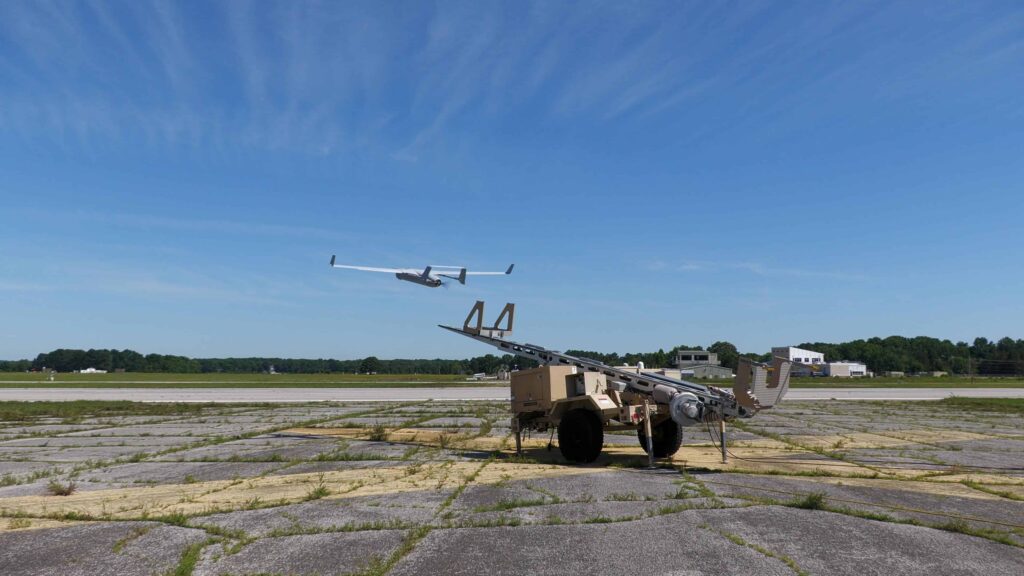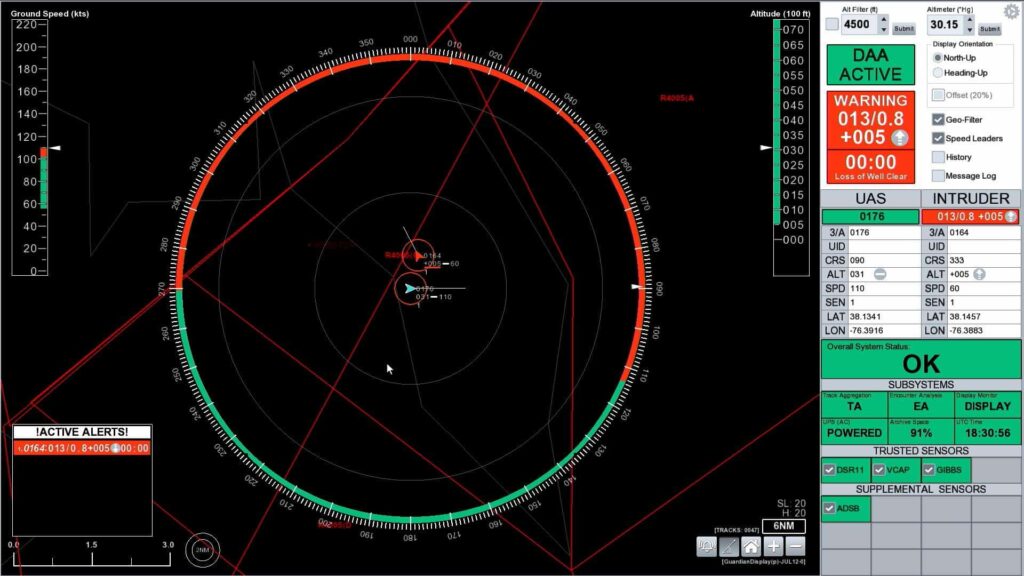



A detect and avoidance system called Guardian has successfully proved it will make defense aviation’s manned/unmanned teaming safer during its first flight test at Naval Air Warfare Center Aircraft Division (NAWCAD) headquarters, on July 28.
“Guardian is a technology that will safely enable manned/unmanned teaming,” said Kris Melton, NAWCAD’s Guardian project lead. “We’re starting at DOD test ranges, but every squadron or ship could integrate this system seamlessly for a safer air wing at sea or ashore.”
Guardian tracks manned and unmanned systems across an airspace within a 200 nautical mile radius. The system improves airspace safety using ground-based sensors to communicate with air vehicle operators in ground control stations to provide visual cues for navigation and traffic avoidance maneuvers like turn, ascend, or descend in instances where collisions are imminent – all on a computer screen, similar to GPS in a car.
“Our single priority is getting Guardian ready for the future of Naval and Marine Corps unmanned aviation,” said Melton. “We’re training our test pilots and fine-tuning the tech during this demo to prepare for the new carrier based unmanned air system, MQ-25’s, arrival to Pax but Stingray is just the beginning.”
During the test, air vehicle operators from Unmanned Air Test and Evaluation Squadron (UX) 24 flew two RQ-21 Blackjacks toward each other while Guardian operators monitored screens that displayed the systems’ approach as part of the test plan. Guardian alerted its operator of an imminent collision once the two systems came within 400 feet of each other and made avoidance maneuver suggestions helping operators successfully avoid the simulated collision.
“The first flight showed Guardian delivers on its promise improving airspace situational awareness and safety,” said Lt. Cmdr. Alex Dulude, the Blackjack air vehicle operator supporting Guardian’s first flight. “Looking ahead, we’ll put Guardian through complex tests to confirm it will reliably handle congestion in the busiest airspaces as we work toward FAA certification which could significantly reduce Stingray’s developmental test time and costs.”

 A screen displays how closely two unmanned systems operate near each other while data to the right provides operators information on speed, location, and other air traffic details during a flight test.
A screen displays how closely two unmanned systems operate near each other while data to the right provides operators information on speed, location, and other air traffic details during a flight test.
NAWCAD engineers prototyped Guardian in response to mandates set by the Federal Aviation Administration (FAA) limiting unmanned systems from operating in airspaces alongside manned aircraft. The restrictions make flight operations increasingly difficult to schedule as unmanned aviation becomes a larger part the Navy’s portfolio. For example, only a single unmanned vehicle can operate over NAWCAD’s airspace, the Atlantic Test Ranges, at any given time making flight operations a challenge to manage across Pax River’s six squadrons testing every aircraft for the Navy and Marine Corps.
Guardian is the only ground based detect and avoidance system developed to meet the FAA’s performance standards for unmanned systems. The test team expects Naval Air Systems Command certification by end of fiscal year 2023.
Guardian was initially developed for defense test ranges in partnership with the Army’s Redstone Test Center, and has early interest from the Air Force. The system is funded by the Office of the Secretary of Defense’s Test Resource Management Center and the MQ-25 Stingray’s program at this time. The test team is targeting technology adoption by the MQ-8 Fire Scout, MQ-4C Triton, and Small Tactical UAS programs for the future.
Find suppliers & manufacturers of Detect & Avoid Systems for Drones & UAV >>





Related Posts
New Drone Fires Thales Missile in Unmanned Air Combat Milestone
UAS Startup Accelerator Awards 3M in Funding
US Navy Orders Unmanned Tactical Resupply Aircraft